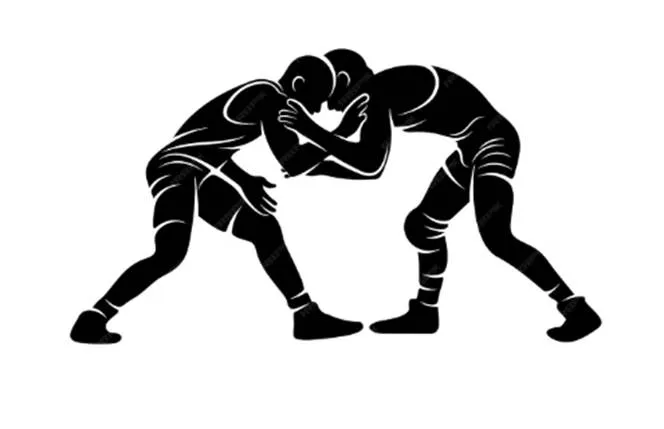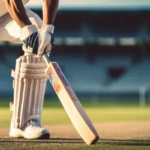Traditional Persian Games: How They Transformed Into Modern Sports and Analytics
Games were never just entertainment in a Persian context. They were deeply cultural and communal for centuries. From polo fields to wrestling houses, people competed with cadence and intention a long time before we had any formal definition of sport. These same traditions helped to develop early principles of physical training and performance metric systems. They have legacies in how we develop sport around the world, as well as in the advent of modern analytic. The connection between Persian culture and modern analytics systems is paired with the history of how ancient traditions developed into a systems of rules, competitions, and metrics that govern present-day sports practice.
From Cultural Practice to Competitive Structure
Such Persian games as polo, wrestling, and horseback archery were connected to society. They presented opportunity to demonstrate courage, leadership, and skill, not just physical strength. These competitive games were in part related to betting of the day, similar in some way to how fans follow modern betting sites (Turkish: popüler bahis siteleri) today. Polo, which originated in Persia, already had team roles and strategic planning which is quite modern.
Over time, these activities develop into a local sporting event distinct from ritualistic local activities preceded their transformation into sporting events. With the expansion of cities and connection to other countries, the games became standardized and followed a clear set of rules. Between the late 19th century, probably most notably, polo held competitions internationally, wrestling became properly organized internationally, and martial arts practice became more established internationally. Persian traditions did not die, they were reestablished and survived into sports.

The Roots of Modern Sports Analytics
Persian games, even in the past, had means of measuring success. The competition involved counting wins, measuring stamina, and comparing strategies. People did not utilize technology, as it depended on observation and memory. Such practices were primitive analytics.
In present-day sports analytics, the logic is the same:
- Tallying results: Wins and records revere medieval record keeping.
- Tracking players: Endurance was considered necessary at the time, as efficiency is now.
- Tactic learning: The strategy on the field was studied similarly to present-day playbooks.
This demonstrates that people appreciated measurement and strategy in sports at an earlier age, before the advent of computers.
The Link Between Legacy and Modernization
The Persian traditions did not disappear; they have penetrated contemporary sporting culture. Their orientation towards perseverance, strategy, and analysis adapts well to novel global paradigms. Betting has also become part of modern sports culture, with many fans following updates through MelBet Instagram Türkiye. To observe its effect, it is handy to tie the cultural survival to the establishment of organized competitions.
Wrestling and Its Analytical Echo
Physical power is not the only thing in wrestling in Persia. It had teachings concerning honor, discipline, and loyalty. Nevertheless, matches entailed meticulousness of stamina and control also. These were initial indicators of performance.
As wrestling had become an international sport, analysts began to measure aspects such as grip strength, speed, and the efficiency of movement. The cultural aspect was preserved, but numbers took center stage. Persian wrestling exemplifies the fusion of tradition and science, making it one of the most notable transitions between ancient practices and contemporary sports science.
Polo as Tactical Framework
In Persia, Polo originated and soon evolved into a game of strategy and coordination. Unlike one-on-one competitions, polo requires players to work as a unit and plan. That is why it is one of the early attempts at team strategy that feels contemporary.
Contemporary analytics is organized in the following way:
- Position responsibilities: Polo had defined responsibilities.
- Team connection: The efficiency was measured by passing and positioning.
- Tactical decisions: Strategic decisions often rely on game reading, as is the case in modern times.
This is evidence that polo was not just a court game, but also an ancestor of sports, where team analytics now serve as a strategy.

Table of Transformation
Modern sports also developed based on their values, preserving the traditions of the Persian games. Here’s a quick comparison:
| Traditional Persian Game | Modern Equivalent | Analytical Focus Today |
| Polo | Modern polo and team sports influence | Roles, teamwork, tactical flow |
| Varzesh-e Pahlavani | Wrestling, martial arts | Strength, stamina, and movement tracking |
| Horseback Archery | Archery, equestrian events | Accuracy, timing, coordination |
This makes it evident that ancient practices did not vanish. They have evolved into new ways and are currently utilizing data-driven analysis.
Endurance and Skill as Measured Values
Physical and spiritual aims were achieved in Persian training houses, where athletes trained to develop power and endurance. The improvement was monitored, even informally. This culture of measurement bears resemblance to many of the current fitness tests.
Other skills, such as precision and control, as viewed by coaches, were similar to the biomechanical reviews admired nowadays. They did not make judgments based on technology, but they both fulfilled the same purpose in making performance measurable. This is one of the most significant connections between Persian games and modern sports science, due to the habit of tracking progress.
How Modern Analytics Completes the Circle
Sports analytics in the modern world is based on sophisticated equipment, such as cameras, sensors, and artificial intelligence, to improve performance and make decisions. Nevertheless, the main idea remains the same: observation, classification, and performance comparison. Machines are doing what the human eye can do, but it is still necessary to learn more about athletes. Rather than merely making decisions by instinct, coaches now tend to examine many thousands of data points, such as running speed and reaction times. This enables them to train the athletes more effectively and reduce the risk of charis accidents. It demonstrates how tradition evolved into a science-based approach, introducing precision and accuracy.
This trend illustrates how athletics have lost their cultural significance to science and technology. The tradition was not erased using analytics — instead, it was extended, becoming more elaborate. The example of Persian games shows that ancient traditions can predetermine the future of measuring and improving athletes. Similar to how ancient wrestling masters used to assess stamina with the naked eye, contemporary analysts rely on software to record all the movements. The culture is still present, but today they have numbers and technology to support them. It is this combination of history and innovation that culminates in the fact that analytics is currently one of the most potent forces in the world’s sports.
Lasting Impact Across Cultures
The Persian games left an impression way beyond. Polo was introduced to the world, wrestling was transformed into an Olympic sport, and evaluation systems laid the groundwork for world sports. It can be seen in the traditions and analytics. These games established the basis of competition that exists today in relation to ancient civilizations and modern world sports.




